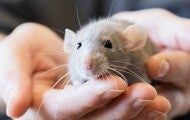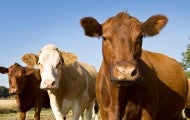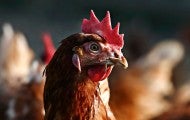Rats have gotten a bad rap throughout human history, but people who share their homes with domesticated rats ( Rattus norvegicus domestica) attest to their intelligence, charisma and social natures. So, yes, rats can make great pets—but like all pets, they need care and attention to thrive. Here are...
Teddy was never meant to have a name. He was born a number, just one of tens of thousands of dogs—mostly beagles like him, chosen for their trusting, docile nature and compact size—bred in the United States for use in experiments each year. Teddy was meant to live and die in a laboratory, without...
The Humane Society of the United States and the Humane Society Legislative Fund are noted champions for the protection and well-being of the nation’s wild horses and burros, and we have strong policy and practical commitments to the humane management of their herds on America’s Western ranges. We...
There’s a surprisingly simple way to make a big difference in the lives of animals: incorporating more plant-based foods. The more plants you eat, the more animals you’ll spare from lives of suffering. Fewer mother pigs will be kept in crates so small they can barely move. Fewer egg-laying hens will...
Rochester Institute of Technology has committed to having 50% plant-based offerings on menus by 2025, in collaboration with the Humane Society of the United States. As part of this effort, HSUS chefs provided an in-person plant-based culinary training to the university culinary staff. These events...
It starts out mildly enough: Heading to work on the subway, you realize you forgot your wallet. No big deal, you think. I’ll borrow money to get home. Soon the lights go out and the train hurtles toward the sky, speeding through the atmosphere. Time passes—it’s hard to tell how long. The subway is...
Imagine a chicken. Picture her downy white feathers and small, intense eyes. Maybe she’s sitting on a nest, softly clucking. Perhaps she’s scratching in the dirt, a quaint red barn in silhouette behind her. Cows graze contentedly nearby; a pig snuffles in the mud. It’s an idyllic vision, familiar...
WASHINGTON —Today, the Humane Society of the United States and Humane Society Legislative Fund filed a petition with the Food and Drug Administration requesting that the agency updates regulations to make clear that animal testing is not legally required for drug approval. The petition also requests...
The Humane Society of the United States has released its annual Protein Sustainability Scorecard, which assesses the efforts of top U.S. food service companies to reduce their impact on the environment and animals through purchasing and menuing practices. The companies included in this report are...










